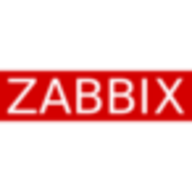

Zabbix and Splunk Observability Cloud are both competitors in the monitoring and observability industry. Splunk Observability Cloud seems to have the upper hand with its advanced data visualization and real-time insights.
Features: Zabbix offers automated discovery, customizable templates, and scalability. It's favored for its open-source nature with no premium features. Splunk Observability Cloud excels with data visualization, third-party integration, and real-time insights using advanced analytics.
Room for Improvement: Zabbix could enhance its user interface, improve documentation, and offer better integration. Its automation and reporting features also require refinement. Splunk Observability Cloud needs to improve synthetic monitoring, simplify dashboards, and enhance correlation features.
Ease of Deployment and Customer Service: Zabbix is primarily on-premises, supported by a community, and is straightforward for open-source savants, lacking streamlined professional support. Splunk Observability Cloud is available both on-premises and in the cloud, boasts strong customer support, and offers scalable deployment despite higher costs.
Pricing and ROI: Zabbix is cost-effective with no licensing fees, allowing funds for technical or professional support, providing high ROI. Splunk Observability Cloud is perceived as expensive, and its ROI is impacted by the premium pricing model, which requires cautious budget consideration.
Problem resolution typically takes between two and five days, which isn't very helpful.
If any issues arise, we can raise a vendor case, and resolutions are provided in a timely and accurate manner.
They did not have a clear answer.
It is so straightforward that I have never had to use the support.
We've used the solution across more than 250 people, including engineers.
I would rate its scalability an eight out of ten.
Zabbix has high scalability.
Zabbix is very scalable and lightweight.
I would rate its scalability ten out of ten.
I would rate its stability a nine out of ten.
We rarely have problems accessing the dashboard or the page.
Zabbix is very scalable and lightweight.
Zabbix is quite stable, and we haven't had any problems with Zabbix itself.
It would be beneficial if server details could be retrieved directly in synthetic monitoring.
Customers sometimes need to create specific dashboards, particularly for applicative metrics such as Java and process terms.
There is room for improvement in the alerting system, which is complicated and has less documentation available.
The only issue I can note is that it's Linux-based, and Linux documentation is not the best.
It appears to be expensive compared to competitors.
Splunk Observability Cloud is expensive.
It is literally free.
The solution overall is very valuable for me. The time to value was immediate.
It offers unified visibility for logs, metrics, and traces.
Splunk APM provides a holistic view of the application.
If disk usage surpasses a threshold, say 70%, I receive alerts and can take proactive action.
Zabbix has a lot of features, including monitoring, status updates, and collecting information telemetry from storages and servers as well.


Splunk Observability Cloud combines log search, data integration, and dashboards for seamless monitoring, enhancing infrastructure visibility and security. Its cloud integration and scalability support diverse environments, improving operational efficiency.
Splunk Observability Cloud offers comprehensive monitoring tools with user-friendly interfaces, enabling end-to-end infrastructure visibility. Its real-time alerting and predictive capabilities enhance security monitoring, while centralized dashboards provide cross-platform visibility. Users benefit from fast data integration and extensive insights into application performance. Despite its advantages, improvements could be made in integration with other tools, data reliability, scalability, and cost management. Users face challenges in configuration complexity and require better automation and endpoint protection features. Enhancing AI integration, alerts, and adaptation for high-throughput services could further improve usability.
What are the key features of Splunk Observability Cloud?In industries like finance and healthcare, Splunk Observability Cloud is implemented for application performance monitoring and infrastructure metrics. Its ability to track incidents and analyze machine data benefits network infrastructure, while distributed tracing and log analysis aid in tackling security threats. Organizations often integrate it for compliance and auditing purposes, enhancing visibility into network traffic and optimizing performance.
Zabbix is an open-source monitoring software that provides real-time monitoring and alerting for servers, networks, applications, and services.
It offers a wide range of features including data collection, visualization, and reporting.
With its user-friendly interface and customizable dashboards, Zabbix helps organizations ensure the availability and performance of their IT infrastructure.
We monitor all Application Performance Monitoring (APM) and Observability reviews to prevent fraudulent reviews and keep review quality high. We do not post reviews by company employees or direct competitors. We validate each review for authenticity via cross-reference with LinkedIn, and personal follow-up with the reviewer when necessary.